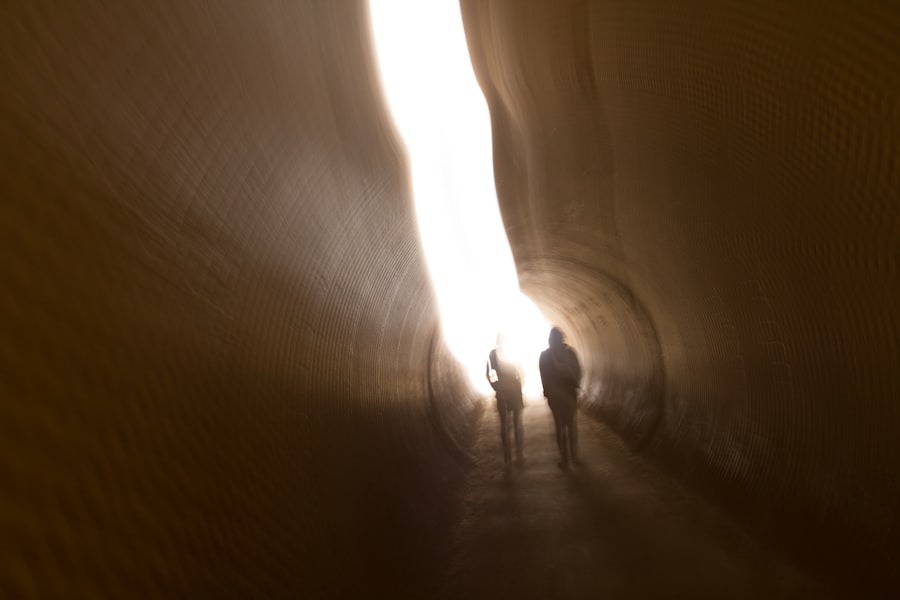The Drake Passage, a body of water situated between the southern tip of South America and Antarctica, is renowned for its tumultuous seas and unpredictable weather patterns. Stretching approximately 600 miles, this narrow strait serves as a critical maritime route for vessels traveling to and from the Antarctic region. Named after the English explorer Sir Francis Drake, who navigated these waters in the late 16th century, the passage has become synonymous with both adventure and peril.
Its unique geographical position not only makes it a vital link for international shipping but also a focal point for scientific research and exploration. The Drake Passage is characterized by its deep waters and strong currents, which are influenced by the confluence of the Atlantic and Pacific Oceans. This convergence creates a dynamic marine environment that is both rich in biodiversity and fraught with challenges for seafarers.
The passage is often described as one of the roughest stretches of ocean on the planet, with waves that can reach staggering heights. As such, it has captured the imagination of adventurers, scientists, and sailors alike, drawing them to its shores with the promise of discovery and the thrill of navigating its treacherous waters.
Key Takeaways
- The Drake Passage is a treacherous body of water located between the southern tip of South America and the northern tip of Antarctica.
- The significance of the Drake Passage in maritime history lies in its reputation as one of the most challenging and dangerous sea routes in the world.
- Navigating through the Drake Passage poses numerous dangers, including extreme weather conditions, strong winds, and unpredictable seas.
- A video capturing the terrifying conditions in the Drake Passage went viral, sparking reactions from viewers and experts alike.
- The video has had a significant impact on public perception of the Drake Passage, highlighting the need for safety measures and precautions when navigating through it.
The significance of the Drake Passage in maritime history
Throughout maritime history, the Drake Passage has played a pivotal role in shaping trade routes and facilitating exploration. In the age of sail, it was a crucial passage for ships seeking to reach the Pacific Ocean from Europe. The passage allowed explorers to venture into uncharted territories, leading to significant discoveries in both geography and natural history.
Sir Francis Drake himself was one of the first to navigate these waters, paving the way for future expeditions that would expand European knowledge of the Southern Hemisphere. Moreover, the Drake Passage has been instrumental in the development of whaling and fishing industries in the Southern Ocean. The rich marine life found in these waters attracted commercial interests, leading to both economic opportunities and environmental challenges.
The passage’s significance extends beyond commerce; it has also been a site for scientific research, particularly in understanding climate change and its effects on ocean currents. As researchers study the unique ecosystems within the Drake Passage, they continue to uncover insights that are vital for global environmental efforts.
The dangers of navigating through the Drake Passage

Navigating through the Drake Passage is not for the faint of heart. The combination of fierce winds, strong currents, and rapidly changing weather conditions creates a perilous environment for even the most experienced sailors. The infamous “Drake Shake,” as it is colloquially known, can turn calm seas into a chaotic maelstrom within minutes.
This unpredictability poses significant risks to vessels traversing the passage, making it essential for sailors to be well-prepared and vigilant. The dangers are not limited to rough seas alone; icebergs and floating debris present additional hazards. The presence of ice can be particularly treacherous, as it can be difficult to spot until it is too late.
Furthermore, the isolation of the Drake Passage means that assistance may be far away in case of an emergency. Sailors must navigate these waters with caution, equipped with knowledge and skills to handle potential crises that may arise during their journey.
The video that captured the terrifying conditions in the Drake Passage
| Metrics | Data |
|---|---|
| Location | Drake Passage |
| Conditions | Terrifying |
| Video Type | Documentary |
| Impact | Widespread attention |
Recently, a video surfaced that vividly illustrated the terrifying conditions often encountered in the Drake Passage. Captured by a crew aboard a vessel attempting to navigate through this notorious strait, the footage showcased towering waves crashing against the ship’s hull, sending sprays of water high into the air. The crew’s expressions of fear and determination were palpable as they battled against nature’s fury.
This raw depiction of maritime struggle resonated with viewers around the world, highlighting both the beauty and danger inherent in this remote region. The video quickly gained traction on social media platforms, sparking discussions about the realities of sailing through such treacherous waters. It served as a stark reminder of the challenges faced by those who dare to traverse the Drake Passage.
For many viewers, it was an eye-opening experience that brought to light the often romanticized notion of adventure at sea, juxtaposed against the harsh realities that sailors must confront.
Reactions from viewers and experts
The reactions to the video were varied and intense. Many viewers expressed awe at the sheer power of nature displayed in the footage, while others voiced concern for the safety of those navigating such perilous waters. Comments flooded in from amateur sailors and seasoned mariners alike, sharing their own experiences and insights about traversing the Drake Passage.
Some praised the crew’s bravery in facing such daunting conditions, while others questioned whether it was worth risking lives for adventure. Experts in maritime safety also weighed in on the video, emphasizing the importance of preparation and respect for nature when sailing through challenging environments like the Drake Passage. They highlighted that while modern vessels are equipped with advanced technology to withstand rough seas, there remains an element of unpredictability that cannot be controlled.
The video served as a catalyst for discussions about safety protocols and best practices for those considering a journey through these tumultuous waters.
The impact of the video on public perception of the Drake Passage

The viral nature of the video significantly impacted public perception of the Drake Passage. For many who had previously viewed it as merely an adventurous route to Antarctica, it became a symbol of danger and unpredictability. The footage transformed perceptions from romantic notions of exploration to a stark awareness of the risks involved in navigating these waters.
This shift in perspective prompted discussions about maritime safety and responsible sailing practices among both seasoned sailors and those new to maritime adventures. As awareness grew, so did interest in understanding more about the Drake Passage’s unique characteristics and challenges. Documentaries, articles, and discussions emerged across various platforms, delving into its history, ecology, and navigational difficulties.
The video acted as a catalyst for education about this critical maritime route, encouraging individuals to approach their journeys with greater respect for nature’s power.
Safety measures and precautions for navigating through the Drake Passage
Given its notorious reputation, safety measures are paramount when navigating through the Drake Passage. Sailors are advised to conduct thorough research before embarking on their journey, including studying weather patterns and sea conditions specific to their travel dates. Understanding seasonal variations can significantly impact safety; for instance, summer months may offer calmer seas compared to winter’s ferocity.
Additionally, vessels should be equipped with state-of-the-art navigation systems and safety gear. Life rafts, emergency beacons, and communication devices are essential tools that can make a difference in emergencies. Crew training is equally important; ensuring that all members are familiar with emergency protocols can enhance overall safety during challenging conditions.
By prioritizing preparation and vigilance, sailors can mitigate some risks associated with traversing this formidable passage.
The role of technology in mitigating the dangers of the Drake Passage
Advancements in technology have played a crucial role in enhancing safety for those navigating through the Drake Passage. Modern vessels are equipped with sophisticated navigation systems that provide real-time data on weather conditions and sea states. These systems allow sailors to make informed decisions about their routes and adjust their plans based on changing circumstances.
Moreover, satellite communication technology has improved connectivity even in remote areas like the Drake Passage. This capability enables sailors to stay in touch with support teams on land or other vessels nearby, providing an added layer of security during their journey. Additionally, innovations in ship design have led to more resilient vessels capable of withstanding harsh conditions.
These technological advancements have transformed how sailors approach their voyages through this challenging strait.
Personal accounts from sailors who have traversed the Drake Passage
Personal accounts from sailors who have traversed the Drake Passage offer invaluable insights into what it truly means to navigate these treacherous waters. Many recount experiences filled with both exhilaration and fear as they faced towering waves and fierce winds. One sailor described feeling a mix of awe and terror as their vessel pitched violently amidst stormy seas; yet they also spoke of an indescribable sense of accomplishment upon successfully completing their journey.
Others shared stories of camaraderie among crew members during challenging times at sea. The shared experience of battling nature’s fury often forged strong bonds among sailors who relied on each other for support and encouragement. These personal narratives highlight not only the physical challenges posed by navigating through the Drake Passage but also the emotional resilience required to confront such formidable conditions.
The future of the Drake Passage and its implications for maritime travel
As global interest in polar exploration continues to grow, the future of the Drake Passage remains a topic of discussion among maritime experts and environmentalists alike.
Increased shipping traffic could lead to heightened risks associated with accidents or environmental degradation if not managed responsibly.
Furthermore, as technology continues to evolve, there may be new opportunities for safer navigation through these waters. Innovations in ship design and navigation systems could enhance safety measures while promoting sustainable practices within maritime travel. However, it is essential for stakeholders to prioritize environmental conservation alongside economic interests to ensure that future generations can continue to explore this remarkable yet perilous passage.
The enduring allure and peril of the Drake Passage
The Drake Passage stands as a testament to nature’s power—a place where beauty meets danger in an awe-inspiring display of raw force. Its historical significance as a route for exploration and trade has shaped maritime history while continuing to captivate adventurers today. Yet, as recent videos have shown, navigating these waters requires respect for their unpredictability and inherent risks.
Personal accounts from those who have braved its challenges serve as reminders that while peril may lurk beneath its surface, so too does an enduring allure that calls out to explorers from around the world. The Drake Passage remains a symbol not only of adventure but also of humanity’s ongoing relationship with nature—one defined by both reverence and resilience.
In recent times, the Drake Passage has garnered attention not only for its treacherous waters but also for a viral video that has left many viewers on edge. This video, capturing the raw power and unpredictability of the passage, has sparked discussions about the challenges faced by those who dare to navigate these waters. For those interested in exploring more about the geographical and historical significance of the Drake Passage, a related article can be found on MyGeoQuest. This article delves into the intricacies of the passage, offering insights into why it remains one of the most formidable maritime routes in the world.
WATCH NOW! Drake Passage: Earth’s Deadliest Waters Revealed
FAQs
What is the Drake Passage?
The Drake Passage is the body of water between the southern tip of South America and the northern tip of the Antarctic Peninsula. It is known for its rough seas and challenging sailing conditions.
Why is the Drake Passage considered scary?
The Drake Passage is considered scary due to its reputation for having some of the roughest seas in the world. The combination of strong winds, powerful currents, and the meeting of the Atlantic, Pacific, and Southern oceans creates challenging sailing conditions.
What is the “Drake Passage scary video” about?
The “Drake Passage scary video” likely refers to footage of a ship or boat navigating through the rough waters of the Drake Passage. These videos often capture the intense waves and turbulent conditions that make the passage so challenging for sailors.
Is it safe to travel through the Drake Passage?
While the Drake Passage is known for its rough seas, many ships and boats safely navigate through it each year. However, travelers should be prepared for potentially challenging sailing conditions and seasickness.
What precautions should be taken when traveling through the Drake Passage?
Travelers should be prepared for rough seas and strong winds when traveling through the Drake Passage. It is advisable to consult with experienced sailors or tour operators who are familiar with the conditions and can provide guidance on how to prepare for the journey.
